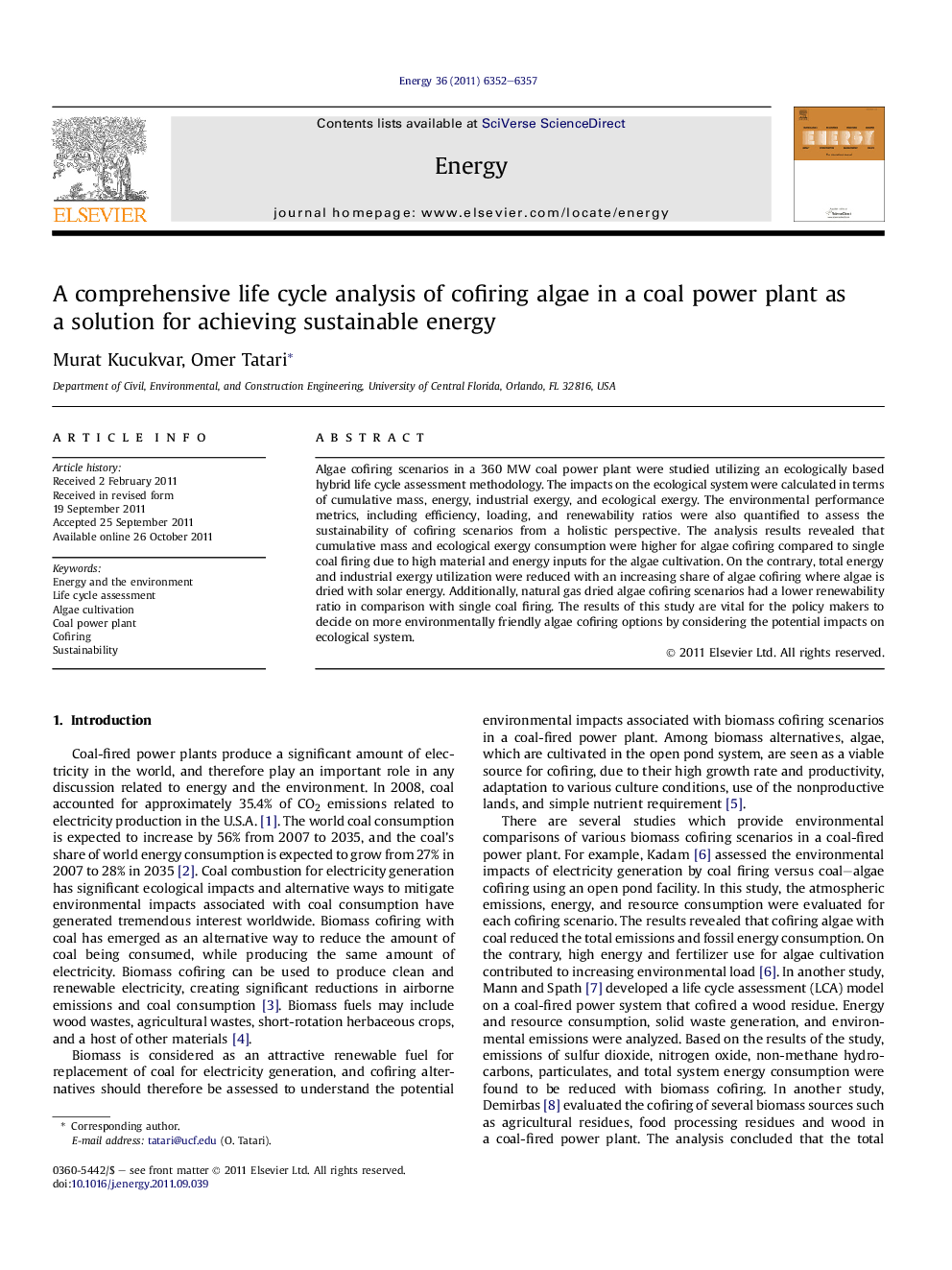| Article ID | Journal | Published Year | Pages | File Type |
|---|---|---|---|---|
| 1734373 | Energy | 2011 | 6 Pages |
Algae cofiring scenarios in a 360 MW coal power plant were studied utilizing an ecologically based hybrid life cycle assessment methodology. The impacts on the ecological system were calculated in terms of cumulative mass, energy, industrial exergy, and ecological exergy. The environmental performance metrics, including efficiency, loading, and renewability ratios were also quantified to assess the sustainability of cofiring scenarios from a holistic perspective. The analysis results revealed that cumulative mass and ecological exergy consumption were higher for algae cofiring compared to single coal firing due to high material and energy inputs for the algae cultivation. On the contrary, total energy and industrial exergy utilization were reduced with an increasing share of algae cofiring where algae is dried with solar energy. Additionally, natural gas dried algae cofiring scenarios had a lower renewability ratio in comparison with single coal firing. The results of this study are vital for the policy makers to decide on more environmentally friendly algae cofiring options by considering the potential impacts on ecological system.
► Current paper has assessed various algae cofiring scenarios in a 360 MW average coal power plant. ► The impacts on the ecosystem were calculated in terms of cumulative mass, energy, industrial exergy, and ecological exergy. ► Solar dried algae cofiring reduced the amount of energy and industrial exergy being consumed for electricity production. ► Total mass and ecological exergy consumptions are found to be higher for algae cofiring.
